Updated: 17-Feb-2020
(See also Curtiss, Wright, Curtiss-Kirkham, Kirkham)

"Curtiss-Wright logo"
-The company name is composed by joining the two brands that built aviation engines for a long time.
-The "Compounds" on the Super-Constellations and the DC-7s "Seven Seas" are perhaps the most famous engines of this company.
In 1929, the "Wright Aeronautical Corp." was created in Pearson, Cincinatti, which was a Curtiss-Wright Division.
-As for Wright itself, the range of radial engines has been very important (see Wright).
-The relatively modern R-3350 "Turbo-Compound" is the maximum expression in wanting to take all possible profit from piston engines before surrendering to turbines. They were made at Curtiss-Wright / Marquette Inc.
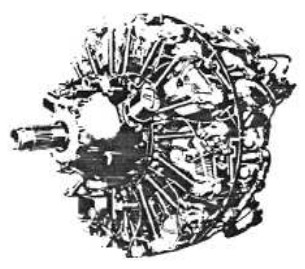
"R-3350 Turbo Compound"

"R-3350 T-C, rear view"
-Around the rear of the engine there are three turbines that recover power from the exhaust gases. They are added through three converging shafts on the crankshaft.
-As a development from the R-1820 Turbo-Compound this engine had it all, gear, supercharger, single-point gas injection, and low-voltage ignition. The coils were on the cylinder heads next to the spark plugs, being the high voltage cables very short so as to avoid leakage at high altitudes.
-It had 18 cylinders in two rows, and the three recovery turbines mentioned above to get 3,700 hp.
-It is said that 45,000 units of this engine were built. They were installed on the military B-29, the Lockheed Super-Constellation, Douglas DC-7 "Seven Seas", Boeing Stratocruiser and Stratotanker, etc.
-As Wright Diesel, between 1961 and 1963 some versions of Packard 1D1700 were made, like the 12V142.
-At the end of the WWII and with the jet engine fever, Curtiss made rocket engines, ramjets, and turbine engines. Material that was already built as WAD or Wright Aeronautical Division.
-In 1956 they tested the Ramjet XRJ-47 and 59 units were produced. They also made the RJ-41, -51 and -55.
-The first aircraft that flew with a rocket engine in the United States was the XF-15C1 and was equipped with a rocket engine that would give rise to the LR-25.
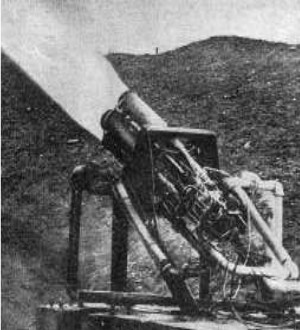
"Pruebas del LR-25"
-The Curtiss-Wright SLR-11 was installed on an X-15. But perhaps the most resonant of the range would be the XLR-25-CW-1 that was installed on the Bell X-2 (Starbuster) that got several speed records.
-To get to all this we must see that the XLR-17-CW-1 ran on gasoline and liquid oxygen, and it had water as a refrigerant. It had spark ignition, and delivered 4,000 Lbs. of thrust. It was used as RATO in the B-45 with an operating time of 60 seconds.
-The XLR-19-CW-1 was experimental and delivered 16,000 lbs. with the same fuels as above.
-The XLR-21-CW-1 was destined for missiles with dimensions similar to that of the German V-2.
-The -23, -25, -27 and -29 engines remained with confidential data for a long time.
-The XLR-37 was another test rocket, very small with only 50 lbs of thrust. It was from 1948, and used gasoline and liquid oxygen.
-The mentioned XLR-25-CW-1 was developed by Goddard at the National Engineering Experimental Station in Annapolis in the years 1942/45. They were variable thrust engines by having four chambers that could be ignited individually.
-Curtiss-Wright (WAD) also built turbines, first under license. The CW J-65 was an Armstrong Siddeley "Sapphire" and the CW J-67 was a Bristol "Olympus".
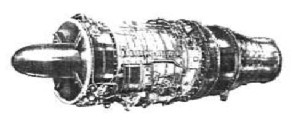
"Curtiss-Wright J-65"
-In the Wood-Ridge Division in NJ, and in the years 1970/80 Wankel-type rotary engines were tested (although the studies began in 1958).

"RC2-32"
-Known as RC2-32, RC2-47, RC2-60, RC2-75, RC2-90, etc. The RC2-350 delivered about 500 hp.
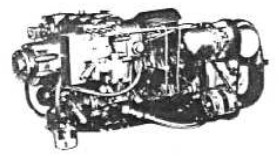
"RC2-75"
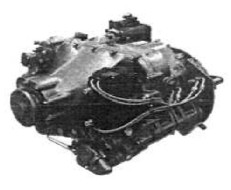
"RC2-75"
-They usually had two bodies and they needed turbochargers for height. As the "pistons" were triangular (see Wankel) and gave three effective impulses for each turn the power multiplied with the small size they had.
-Proposed for military employment, they also settled on civilian aircraft such as the Cessna Cardinal in the photo, Hughes TH-55A helicopters, Piper and Beech, but finally they surrendered to the traditional and cheaper classic piston engines.
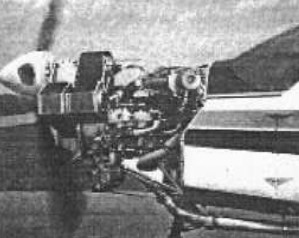
"Cessna with RC2"
-In Wood-Ridge they also worked on future engine generations. Long ago they were pioneers in the SETE engine (Supersonic Expendable Turbine Engine), which was a simple high-speed disposable engine for future generations on cruise missiles.
-Recenty they have made projects with Wankel engines, highlighting the one that they mounted on a Cessna Cardinal with a fixed undercarriage that we show below and also the engine alone.
-It was in a program sponsored by the US Navy to make a silent plane.
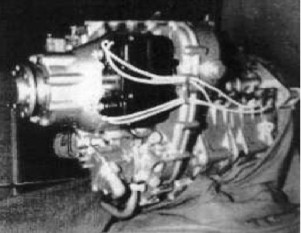
"C-W Wankel type engine"
-It has two working pistons, and an important gear. The black accessory that we see in its front part is a double Bendix magneto, an R-2000, very in vogue at that time (1960-70).

"The Cardinal in which the tests were made"
-In the beginning of building Wankel engines they made the one we see below. As is commented, it had only two moving parts, the triangular piston and the shaft.
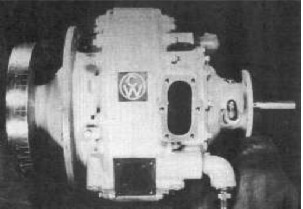
"The small Curtiss-Wright"
-Note that a non-current brand logo is used.
-There is an experiment from Curtiss-Wright, the X100, which used the exhaust of a turbine to maneuver an airplane without horizontal stabilizer or rudder.
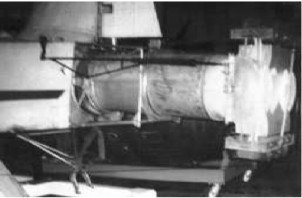
"The experimental X-100"
-We found a picture of an RC2-60.
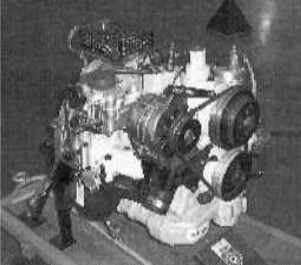
"The Curtiss-Wright RC2-60"
-Naturally it's a two-body, 60-HP Wankel. There is one at the New England Air Museum.
-The first rocket engine that was used by the X-2 had two combustion chambers giving three powers. Low, high, and full with both chambers working.

"The X-2 rocket engine"
-Now we show a drawing of the LR25-W-1 engine with two combustion chambers. The main chamber delivered 8,000 lbs of thrust and the auxiliary 4,000 lbs.

"Curtiss-Wright engine for the Bell X-2"
-The ramjet that reached more than 3 Mach, which was used on the SM-64A missile, is also from Curtiss-Wright.

"Curtiss-Wrigh ramjet"
From Appendix 9: See main text for illustrations of rocket engines of this brand and generated references:
-LR-17
-LR-19
-LR-21
-LR-27
-LR-29
-LR-37
-RJ-47 (XRJ-47-W-5)
-XLR-17-CW-1
-XLR-19-CW-1
-XLR-21-CW-1
-XLR-25-CW-1
-XLR-27-CW-1
-XLR-29-CW-1
-XLR-37-CW-1
From Appendix 10: The RC-260-48 built by the Curtiss-Wright is a Wankel type rotary piston engine.

"Curtiss-Wright RC-260-48"
Engines of CURTISS - WRIGHT
Model: J65
Arquitecture:
Compressor/s:
Combustion chambers:
Turbines:
Power / Thrust:
Weight:
Model: LR-25 (X-2)
Arquitecture: Rocket engine
Chambers: Two combustion chambers
Fuels:
Feed System:
Ignition:
Thrust:
Weight:
With two combustion chambers. The main chamber delivered 8,000 lbs of thrust and the auxiliary 4,000 lbs.
Model: LR-25-W-1
Arquitecture:
Chambers:
Fuels:
Feed System:
Ignition:
Thrust:
Weight:
Model: LR-37 (XLR37-CW-1)
Arquitecture:
Chambers:
Fuels:
Feed System:
Ignition:
Thrust:
Weight:
Model: R-1200 Simoon
Arquitecture:
Cooling:
Total Displacement:
Bore / Stroke:
Power: @ rpm
Weight:
Model: R-1300, 7 cils.
Arquitecture:
Cooling:
Total Displacement:
Bore / Stroke:
Power: @ rpm
Weight:
Model: R-1750
Arquitecture:
Cooling:
Total Displacement:
Bore / Stroke:
Power: @ rpm
Weight:
Model: R-1820 / Turbo-Compound
Arquitecture:
Cooling:
Total Displacement:
Bore / Stroke:
Power: @ rpm
Weight:
Model: R-2600, 14 cils.
Arquitecture:
Cooling:
Total Displacement:
Bore / Stroke:
Power: @ rpm
Weight:
Model: R-3350 / Turbo-Compound
Arquitecture:
Cooling:
Total Displacement:
Bore / Stroke:
Power: @ rpm
Weight:
Model: R-540 Whirlwind
Arquitecture:
Cooling:
Total Displacement:
Bore / Stroke:
Power: @ rpm
Weight:
Model: R-600 Challenger
Arquitecture:
Cooling:
Total Displacement:
Bore / Stroke:
Power: @ rpm
Weight:
Model: R-760 Whirlwind
Arquitecture:
Cooling:
Total Displacement:
Bore / Stroke:
Power: @ rpm
Weight:
Model: R-975 Whirlwind
Arquitecture:
Cooling:
Total Displacement:
Bore / Stroke:
Power: @ rpm
Weight:
Model: Ram-jet 3 Mach
Arquitecture:
Chambers:
Fuels:
Feed System:
Ignition:
Thrust:
Weight:
Model: RC-2-60
Arquitecture:
Cooling:
Total Displacement:
Bore / Stroke:
Power: @ rpm
Weight:

"Curtiss-Wright RC2-60"
Model: RC2-32
Arquitecture:
Cooling:
Total Displacement:
Bore / Stroke:
Power: @ rpm
Weight:
Model: RC2-75
Arquitecture:
Cooling:
Total Displacement:
Bore / Stroke:
Power: @ rpm
Weight:
Model: RJ-41
Arquitecture:
Chambers:
Fuels:
Feed System:
Ignition:
Thrust:
Weight:
Model: RJ-47 (XRJ-47-W-5)
Arquitecture:
Chambers:
Fuels:
Feed System:
Ignition:
Thrust:
Weight:
Model: RJ-51
Arquitecture:
Chambers:
Fuels:
Feed System:
Ignition:
Thrust:
Weight:
Model: RJ-55
Arquitecture:
Chambers:
Fuels:
Feed System:
Ignition:
Thrust:
Weight:
Model: SLR-11. motor cohete
Arquitecture:
Chambers:
Fuels:
Feed System:
Ignition:
Thrust:
Weight:
Model: SM-64A
Arquitecture:
Chambers:
Fuels:
Feed System:
Ignition:
Thrust:
Weight:
Model: X-100
Power: @ rpm Other details:

"The experimental X-100"
Model: XLR-17-CW-1, (LR-17)
Arquitecture:
Chambers:
Fuels:
Feed System:
Ignition:
Thrust:
Weight:
Model: XLR-19, (LR-19)
Arquitecture:
Chambers:
Fuels:
Feed System:
Ignition:
Thrust:
Weight:
Model: XLR-21,(LR-21)
Arquitecture:
Chambers:
Fuels:
Feed System:
Ignition:
Thrust:
Weight:
Model: XLR-25
Arquitecture:
Chambers:
Fuels:
Feed System:
Ignition:
Thrust:
Weight:
Model: XLR-27, (LR-27)
Arquitecture:
Chambers:
Fuels:
Feed System:
Ignition:
Thrust:
Weight:
Model: XLR-29, (LR-29)
Arquitecture:
Chambers:
Fuels:
Feed System:
Ignition:
Thrust:
Weight:


